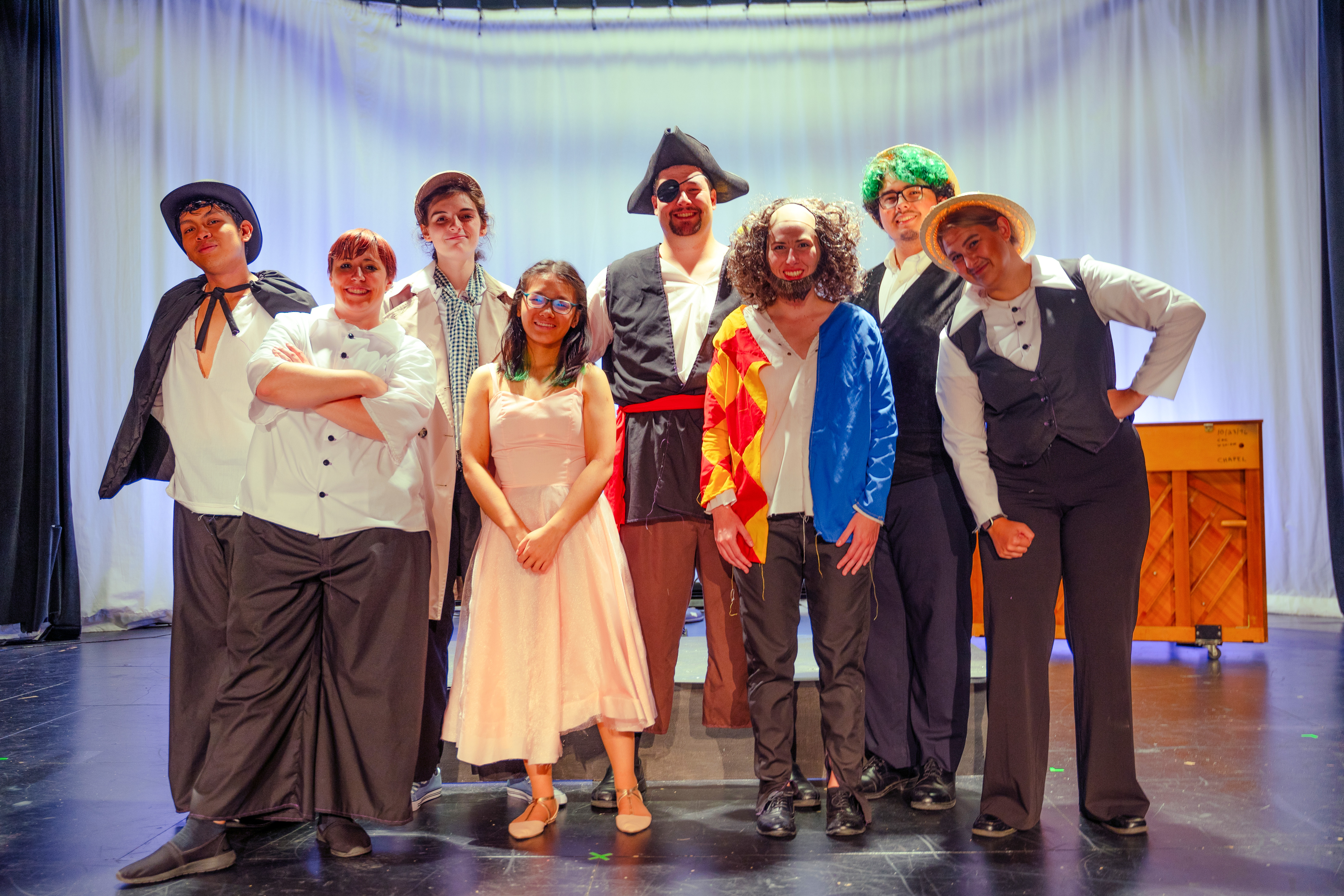
What happens when a bunch of students used to drinking from a firehose decide to channel their energy into musical theater? If what you’re picturing is a bit chaotic, you’re on the right track.
For more than 50 years, the MIT Music Theater Guild (MTG) has put on epic performances that are equal parts ambitious, impressive, and creative. From “Rocky Horror Picture Show” to original remakes of superhero blockbusters and everything in between, the productions are, above all else, entertaining.
“At its core, it’s just students being passionate about the art they are creating and giving back to their community,” says senior Michaela Purvis, who has served as a president, choreographer, cast member, and more with MTG. “Something about that is really special for me.”
Members of the group are quick to point out that MTG is completely student-run, which makes for a quirky, scrappy culture in which members step up to serve in whatever roles are needed for each show.
That may sound like a difficult way to maintain the group’s four annual performances, but since it was formed in 1971, MTG students have consistently committed themselves to complex shows with an enthusiasm that not even a global pandemic could stop.
“The fact that we’ve existed continually for so long speaks volumes,” Purvis says. “I think it shows the persistence and spirit of students in general. When we’re in pursuit of a project, we’re able to carry it through.”
In many ways, current and former members say MTG’s spirit is an extension of MIT’s ethos.
“MIT students have this attitude that anything that is technically possible can be done,” says Matt Putnam ’09, who has stayed involved with MTG since graduating. “It’s similar to the hacks. … Musical theater is similarly bonkers. If musical theater didn’t exist, and I said, ‘We’re going to put on a show that’s like a movie, but it’s going to be live and everyone’s going to have to memorize two hours-worth of lines, and we’re going to add songs and dances people will need to learn, and we’re going to need sets and lights and choreography and props.’ You’d say that’s crazy. But it is technically possible, so I think students dive into it with this attitude of ‘Let’s make it happen.’”
MTG’s members usually wait until a couple of months before their next performance to pick what show they’ll do, which makes for a hectic preparation but ensures students like what they’re performing.
Some MTG positions, like president and treasurer, are decided on a biannual basis. But many positions are filled after a show is selected. In addition to the actors and musicians, there are carpenters, lighting and sound engineers, costume, hair, and makeup managers, and even a webmaster and documentarian.
“The biggest misconception is you need to be able to sing, act, and dance to be a part of the Music Theater Guild,” junior Eleanor Jaffe says. “You don’t need to be able to do anything. You just need to want to do something. That can be painting, it can be acting, dancing, sewing — literally anything. We have a role for anyone.”
About a week before showtime, everyone comes together to assemble the set. Then the group is in production week. Mondays are spent setting up the technical elements of the stage and conducting a full run-of-show. Tuesday night is orchestra night. There are dress rehearsals Wednesday and Thursday where members try to get through everything without stopping. Friday is showtime.
“Opening night, even in the best of cases, feels sudden and rushed and not quite ready,” Putnam says. “You have to accept it’s never going to be perfect. Some people are quite nervous.”
It shouldn’t be a surprise that things don’t always go according to plan. Fortunately, overcoming adversity is one of MTG’s specialties. One year, a blizzard closed campus during two of MTG’s sold-out shows. Kresge Auditorium was already booked for the make-up dates, so MTG performed in a lecture hall (the set and light teams improvised). Another year, on the first day of “Jesus Christ: Superstar,” the actress playing Mary Magdalene walked in sick and unable to sing. With two hours until showtime, the organizers called another member who hadn’t been involved in the show. That member agreed to sit in the orchestra pit and perform every song into a microphone while the original actress lip-synced. Even during the pandemic, the group published virtual shows.
“There’s a very standard way we do everything, and sometimes things get wobbly and we have to figure them out, but there’s such a large history that we know how to get things done,” Jaffe says.
A show that still holds a prominent role in MTG lore is a 2003 performance that lumped the first three “Star Wars” movies into one epic musical parody. That’s the show that hooked Putnam, who remembers one costume designer using a vacuum form machine to create storm trooper armor. Legend holds that the show featured more than 200 costumes. MTG eventually performed the show at the opening of a “Star Wars” exhibit at the Museum of Science in front of George Lucas himself.
“I thought it was the most incredible thing I’d ever seen,” Putnam recalls. “It pulled in so many different resources from the community.”
Current and former MTG members say it’s fulfilling to be a part of something that requires people from so many different backgrounds. There’s truly something for everyone in MTG, whether students are looking to apply their engineering and design skills, find an outlet for their side hobbies, or they just like to sing.
“Putting together a show is kind of like being on an engineering team or working for a company with a lot of different departments,” says Putnam who currently works as a software engineer. “That’s what’s so exciting about musical theater for me: how many different people and skillsets come together to make the finished product.”
